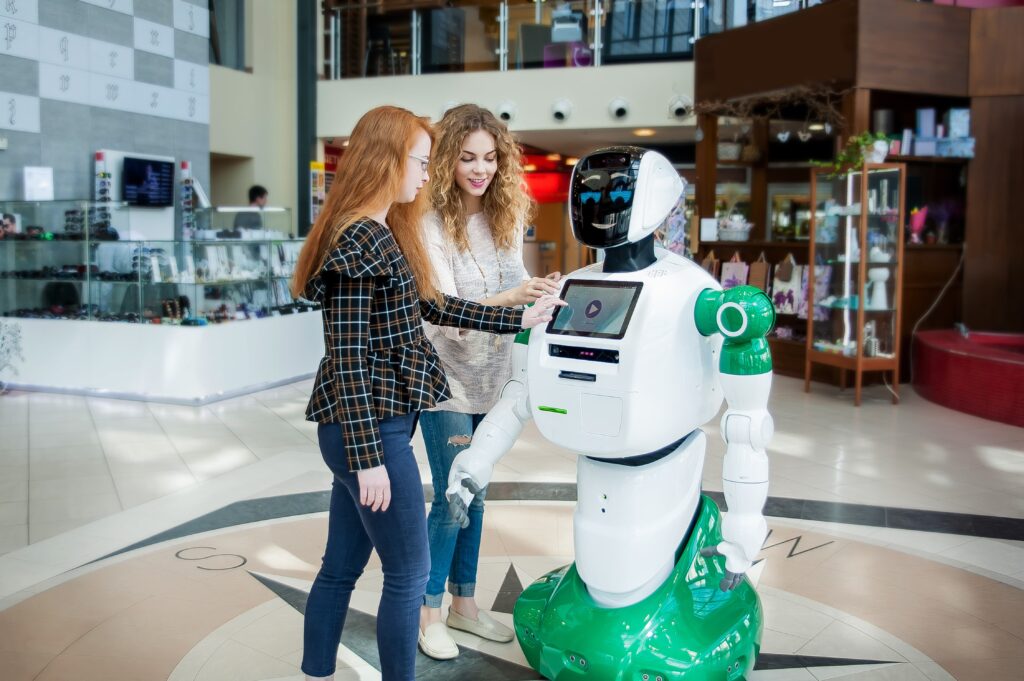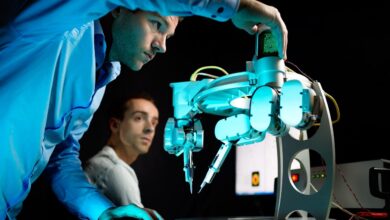Introduction
Have you ever wondered how various forms of Robotic Evolution surround us daily? From the automatic vacuum cleaner whirring around your house to the complex machinery in manufacturing plants, robots have integrated into our society seamlessly. Let’s explore this intriguing universe in more detail.
Robotic Evolution
-
Early Beginnings
Many people are unaware that robots have been in existence for a longer period than they think. The term “robot” was coined in the 1950s, coinciding with the invention of the first programmable robot. Since then, robotics has made remarkable strides.
-
Modern Advancements
How advanced robots have become in the twenty-first century is remarkable. Modern AI technology has helped them become more intelligent, independent, and capable of learning, adapting, and making judgments. It’s imposing!
Types of Robotics
-
Industrial Robots
You must have seen videos of robots handling heavy machinery in factories, right? These are industrial robots; they perform repetitive tasks with speed and precision.
-
Service Robots
These robots assist in healthcare, cleaning, or delivery services—have you ever heard of robotic surgery? That’s a prime example of service robots in action.

-
Autonomous Robots
These robots operate without direct human control. The Mars Rovers, autonomous vehicles, and certain drones are excellent examples of this category.
Applications of Robotics
-
Healthcare
Robotics has transformed healthcare from surgical robots to telemedicine bots, making treatments more precise and accessible.
-
Manufacturing
Industrial robots are revolutionizing the manufacturing sector. They’ve significantly improved efficiency, safety, and product quality.
-
Entertainment
Who could forget robots in movies, games, and even amusement parks? Robotics in entertainment creates immersive experiences that were once only imaginable.
Challenges in Robotic Evolution
-
Technological Barriers
Although robotics has come a long way, technical hurdles like improving autonomy, decision-making abilities, and energy efficiency remain.
-
Ethical and Societal Implications
What happens when robots replace human jobs? And who is responsible if a robot makes a mistake? These ethical and societal questions are also challenges in the field of robotics.
The Future of Robotics
-
Advancements to Look Forward To
The future of robotics holds promising advancements, like the development of humanoid robots and machines that can understand and express emotions. It sounds like science fiction.
-
Robotics and Society
As robotics advances, its integration into society will deepen. However, we must ensure this process benefits all, balancing technological progress with ethical considerations.
Conclusion
The world of Robotic Evolution is intricate and full of potential. From its early beginnings to its promising future, it’s a field constantly evolving and impacting our lives in numerous ways. Let’s embrace this technology while mindfully navigating its challenges.
FAQs for Robotic Evolution
What are the types of robots?
There are industrial robots for manufacturing, service robots for healthcare and cleaning, and autonomous robots that operate without human control.
How does robotics impact healthcare?
Robotics improves healthcare by enabling surgical robots and telemedicine bots for precise and accessible treatments.
What challenges does robotics face?
Robotics faces challenges like technological barriers and ethical considerations regarding job displacement and responsibility for robot errors.
What can we expect in the future of robotics?
The future of robotics includes advancements in humanoid robots and emotionally intelligent machines, with potential societal impacts.


